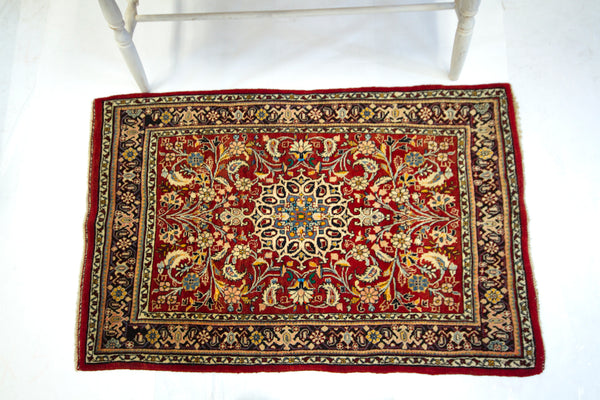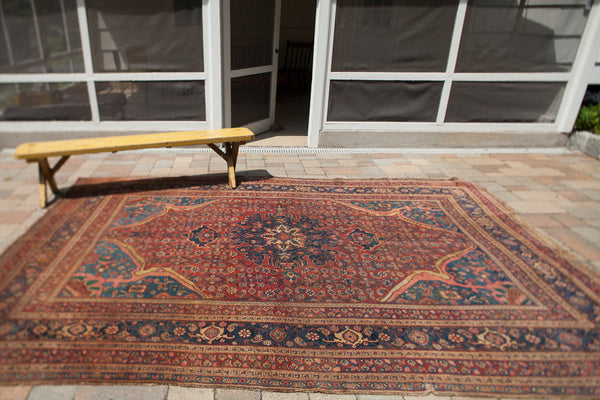Rug Talk: Vintage + Antique Rugs
We love rugs. There is always at least one or two spots for a special antique or vintage rug in your room: and it does not always have to be on the floor. A rug can be displayed on the wall, atop the ottoman, slung over the side of a couch. So with all these different ways of decorating with rugs, lets talk about what we consider rugs: Technically a rug is an area rug measuring approximately 5'x8' and smaller in size. The word 'rug' and 'carpet' are for the most part used interchangeably. In the Old New House shop, our featured rugs are exclusively hand knotted or hand woven - which is the more intimate of many types of processes in making rugs*. This is one important aspect of what we provide to the customers: Authenticity and genuine hand made rugs. So while one part of authenticity is hand made nature, another important factor is true age.
So how do we date our rugs?
In the Old New House shop, an antique rug is one we place an estimated age of 100 old or greater. This is somewhat of a conservative approach to calling a rug antique (some say 60 or 80 years). Why do we not call an 60 or 80 year old rug antique? Many years ago, old customs import/export laws would only consider a rug to be antique if it exceeded 100 years old. Many museums and collectors still consider this to be true. In the ONH shop, if you see us calling a rug an antique, it's more or less pre-1915. Here are a few of our antique rugs:
An antique Mohtashem Kashan rug
An antique Belouch rug
An antique Kerman rug
What is a vintage rug? We consider a vintage rug to be one with a weaving date of +/- 40 to 99 +/- years old. Due to a high level of commercialization in the rug industry, we select the best of the best vintage rugs to offer in our shop - great quality wool and weave, awesome contrast or tone on tone. Here are a few examples of Old New House vintage rugs:
A gorgeous vintage Sarouk runner
A hard-to-find size rug - a happy vintage Hamadan
A vintage Kerman rug
* Loose paraphrasing of industry wording - an Oriental rug is a hand made weaving created with or without pile comprised of a warp and weft made in the Near, Mid or Far East. Technically, this includes many types of rugs - Kilim rugs, hand knotted rugs, soumak rugs, even hand tufted rugs. The rugs we feature in the shop are exclusively hand made, and most all of the rugs are hand knotted. While qualities in all types of rugs may vary, the process of hand knotting rugs is considered among the more intimate of processes to create a floor covering.
Melissa + Dave











